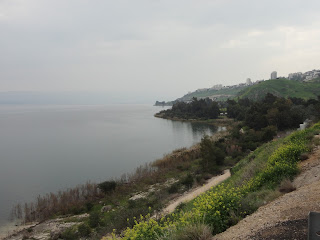There are LOTS of mediaeval castles scattered around Israel. This is a Muslim castle that belonged to the nephew of Saladin. Begun about 1229, it was built to withstand a Christian onslaught against Damascus when the Muslims were anticipating trouble about the time of the 6th crusade. It was in use only a little over 175 years, when the Muslims kicked the Crusaders out of Acco at the end of the 13th century. It started out as a smallish castle and eventually encompassed the entire mountain top and is many acres in size.
Hmmm... where's waldork?
How did they get those small stones to stay up in the upper arch, for almost a 1,000 years? It is easy to see the structure in the doorway of the shaped stones and the keystone. It is not so easy to see in the upper arch.
This is standing at one end of the complex and looking towards the other end. Probably a 1/2 mile walk! By the way this complex is just south of Mt. Hermon.
Another view looking back at where the last photo was shot.
One of the big cisterns. Water is always an issue in the Middle East.
This is over the main gate.
Hmmm... where's waldork?
How did they get those small stones to stay up in the upper arch, for almost a 1,000 years? It is easy to see the structure in the doorway of the shaped stones and the keystone. It is not so easy to see in the upper arch.
This is standing at one end of the complex and looking towards the other end. Probably a 1/2 mile walk! By the way this complex is just south of Mt. Hermon.
Another view looking back at where the last photo was shot.
One of the big cisterns. Water is always an issue in the Middle East.
This is over the main gate.





















































